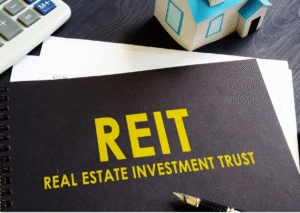What Does Ground-Up Construction Financing Mean?
Ground-up construction financing refers to funding used to build a property from the foundation rather than renovating an existing structure. Unlike traditional mortgages, which are based on the purchase of already built properties, this financing covers costs like land acquisition, materials, permits, labor, and construction management. It is often structured in phases—lenders disburse funds as construction milestones are reached (Consumer Financial Protection Bureau).
Because of the risk involved, lenders typically require:
- Detailed project plans
- Strong financial documentation
- A clear exit strategy (renting, selling, or refinancing after completion)
Understanding the basics is the first step toward choosing the smartest financing strategies.
Why Is Ground-Up Construction Financing Different from Traditional Loans?
Ground-up construction financing is more complex than conventional mortgages because lenders are not funding a finished, income-generating property. Instead, they are financing potential. This means loan approval often depends on:
- Projected value after completion (commonly known as after-repair value or ARV).
- Borrower’s experience in real estate development.
- Loan-to-cost (LTC) ratio, which measures how much of the project cost will be covered by the loan compared to the borrower’s own equity.
For example, while a traditional mortgage might finance up to 80% of a home’s purchase price, construction loans might fund only 70–75% of the total projected cost (U.S. Department of Housing and Urban Development).
What Documents Do Lenders Require for Ground-Up Construction Loans?
Before lenders approve construction financing, they require extensive documentation to reduce risk. Common requirements include:
- Architectural and engineering plans
- Zoning and permit approvals
- Construction timeline and budget
- Appraisal with projected ARV
- Builder’s track record
Some lenders also ask for borrower liquidity statements to ensure that the investor can handle unexpected costs.
No Limit Investments specializes in helping investors prepare financing packages that meet lender requirements by offering solutions like New Construction Loans and Real Estate Financing Solutions designed for developers.
How Can Investors Use Fix & Flip Loans in Ground-Up Construction Projects?
While fix & flip loans are traditionally used for renovations, they can sometimes bridge funding gaps for ground-up projects. For example, an investor may use a Fix & Flip Loan to acquire the land and cover early construction costs while waiting for a larger financing package to close.
Advantages include:
- Quick access to capital
- Flexible underwriting
- Short-term funding aligned with construction timelines
By integrating fix & flip loans strategically, investors can keep projects moving without costly delays.
Why Should Investors Consider Buy & Hold Mortgages After Construction?
A smart strategy for ground-up construction involves planning for long-term profitability. Once construction is complete, refinancing into a Buy & Hold Mortgage provides investors with:
- Lower long-term interest rates
- Stable monthly payments
- Rental income to support cash flow
This transition allows an investor to hold the property, generate steady income, and build equity while reducing reliance on short-term construction loans.
How Does BRRRR Financing Apply to Ground-Up Construction?
The BRRRR method, Buy, Rehab, Rent, Refinance, Repeat—can also apply to new builds. Here’s how:
- Buy land or a teardown property.
- Rehab or build new through ground-up construction.
- Rent the completed property to establish cash flow.
- Refinance with a long-term loan such as a DSCR or Buy & Hold Mortgage.
- Repeat with another property using the equity gained.
No Limit Investments provides BRRRR Financing tailored to investors who want to scale portfolios efficiently with ground-up builds.
What Role Do DSCR Loans Play in Ground-Up Construction Financing?
Debt Service Coverage Ratio (DSCR) Loans allow investors to qualify for financing based on the income the property will generate rather than personal income or tax returns. For new builds, this is especially helpful once tenants are secured.
Benefits include:
- Simplified approval based on rental cash flow projections
- No personal income verification
- Flexibility for investors scaling multiple properties
This makes DSCR loans an excellent exit strategy once construction is complete and the property is leased.
When Is Cash Out Refinance a Smart Move for Ground-Up Investors?
A Cash Out Refinance lets investors tap into the equity built through successful ground-up construction projects. This strategy works well for:
- Funding new projects without selling completed properties
- Paying off higher-interest short-term construction loans
- Expanding a real estate portfolio without relying solely on outside capital
By refinancing through providers like No Limit Investments, investors can unlock liquidity and reinvest confidently.
How Do New Construction Loans Fit into the Bigger Strategy?
At the core of ground-up construction financing are New Construction Loans. These loans are structured to provide funding in phases:
- Initial phase for land acquisition and permits
- Mid-phase for labor and materials
- Final phase for project completion and finishing costs
No Limit Investments provides streamlined new construction financing solutions that align with investor timelines and budget needs, making it easier to bring projects from blueprint to reality.
How Can Investors Secure the Best Terms for Ground-Up Financing?
Smart investors use a combination of strategies to secure favorable terms:
- Strong credit profile and liquidity
- Detailed business plan for the project
- Partnership with experienced builders
- Diversifying financing through a mix of Fix & Flip Loans, DSCR Loans, and New Construction Loans
Working with experts who specialize in real estate funding helps minimize risk and improve approval odds. This is where Real Estate Financing Solutions from No Limit Investments come in—offering tailored options for every stage of development.
Why Should You Choose Professional Guidance for Ground-Up Construction Financing?
Ground-up construction involves multiple moving parts—financing, permits, contractors, and exit strategies. Partnering with professionals ensures that:
- Funding gaps are avoided
- Projects remain on schedule
- Risk is minimized through smart loan structuring
Investors who leverage expert guidance can focus on growth while professionals handle the complexities of financing.
Where Can You Find the Best Ground-Up Construction Financing?

If you’re ready to take your real estate projects from blueprint to reality, now is the time to act. Whether you need Fix & Flip Loans, Buy & Hold Mortgages, BRRRR Financing, Cash Out Refinance, DSCR Loans, New Construction Loans, or complete Real Estate Financing Solutions, the right partner makes all the difference.
Visit No Limit Investments today to explore tailored financing options and secure the future of your real estate portfolio. Call now for more information!
Final Thoughts
Ground-up construction financing may feel overwhelming, but with the right strategies, it becomes a powerful tool for building wealth. By combining construction-specific loans with smart refinancing options and long-term mortgage strategies, investors can reduce risk, improve profitability, and scale confidently. Partnering with experts ensures every stage of the project is supported—from land purchase to rental cash flow.
The smartest investors know that financing is not just about funding—it’s about strategy. With the right tools and the right partner, your vision can become a thriving, income-generating reality.
Works Cited
Consumer Financial Protection Bureau. “Construction and Construction-to-Permanent Loans.” Consumer Financial Protection Bureau, www.consumerfinance.gov. Accessed 21 Aug. 2025.
U.S. Department of Housing and Urban Development. “Mortgage Insurance for Construction and Substantial Rehabilitation.” HUD.gov, www.hud.gov. Accessed 21 Aug. 2025.
Frequently Asked Questions
- How does ground-up construction financing differ from traditional mortgages?
Ground-up construction financing funds the creation of a property from the ground rather than purchasing an existing building. Unlike traditional mortgages that cover a finished property, construction loans are released in phases as milestones are completed. Investors often combine them with solutions like New Construction Loans and later refinance into Buy & Hold Mortgages for long-term stability.
- Can I use Fix & Flip Loans for ground-up projects?
Yes. While Fix & Flip Loans are usually designed for renovations, they can also provide short-term funding for land acquisition and early construction phases. This flexibility allows investors to begin projects quickly while arranging larger, long-term financing.
- What role do DSCR Loans play after construction is completed?
Debt Service Coverage Ratio (DSCR) Loans are ideal once a property is generating rental income. Instead of requiring personal income verification, approval is based on the property’s ability to cover debt payments through rental cash flow. This makes DSCR Loans an effective option for scaling ground-up investments.
- How does BRRRR Financing apply to new builds?
The BRRRR method—Buy, Rehab, Rent, Refinance, Repeat—can adapt to ground-up construction. Investors purchase land, build new structures, rent them out, and then refinance using long-term products like Buy & Hold Mortgages or Cash Out Refinance. With guidance from No Limit Investments, BRRRR Financing can help scale portfolios faster.
- When should investors consider a Cash Out Refinance after construction?
A Cash Out Refinance is smart once the property has appreciated or stabilized as a rental. This strategy allows investors to unlock equity from the new build, pay down higher-interest construction loans, and reinvest in new projects. It’s a powerful way to expand a portfolio while maintaining ownership of existing assets.







